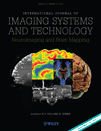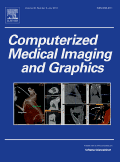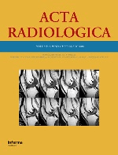
JOURNAL OF DIGITAL IMAGING
Scope & Guideline
Leading the Charge in Imaging Science and Technology
Introduction
Aims and Scopes
- Medical Imaging Techniques:
The journal publishes research on various medical imaging modalities such as MRI, CT, ultrasound, and radiography, emphasizing advancements in imaging technologies and methodologies. - Artificial Intelligence and Machine Learning Applications:
A significant focus is on the application of AI and machine learning techniques in medical imaging, including automated image analysis, segmentation, and disease classification. - Radiomics and Image Analysis:
Research on radiomics, which involves extracting large amounts of features from medical images for predictive modeling, is a core area of the journal's focus. - Clinical Applications and Outcomes:
The journal addresses the clinical implications of imaging research, including studies that evaluate the diagnostic accuracy, efficiency, and patient outcomes associated with various imaging techniques. - Imaging Informatics and Workflow Integration:
Research on the integration of imaging informatics, including PACS (Picture Archiving and Communication Systems), into clinical workflows is a prominent theme, highlighting the importance of technology in healthcare. - Quality Assurance and Image Quality:
The journal emphasizes the importance of image quality assessment and quality assurance protocols in medical imaging to ensure accurate diagnostics.
Trending and Emerging
- Deep Learning and Neural Networks:
There is a growing trend towards using deep learning and neural networks for various applications in medical imaging, including image classification, segmentation, and reconstruction. - Integration of AI in Clinical Practice:
Research exploring the integration of AI tools into clinical workflows is on the rise, focusing on how AI can enhance diagnostic accuracy and efficiency in radiology. - Telemedicine and Remote Imaging Solutions:
The COVID-19 pandemic has accelerated interest in telemedicine and remote imaging solutions, with studies focusing on their implementation and effectiveness in patient care. - Personalized Imaging and Precision Medicine:
The journal is increasingly featuring research on personalized imaging approaches that cater to individual patient needs, emphasizing the role of imaging in precision medicine. - Multimodal Imaging Approaches:
There is a trend towards multimodal imaging, where researchers combine data from different imaging modalities to enhance diagnostic capabilities and outcomes. - Explainable AI in Medical Imaging:
As AI becomes more integrated into clinical practice, there is a rising interest in developing explainable AI models that provide insights into their decision-making processes in diagnostic imaging.
Declining or Waning
- Traditional Imaging Techniques without AI:
Research focusing solely on traditional imaging techniques without integrating AI or machine learning has seen a decline, as the field increasingly emphasizes the role of advanced computational methods. - Non-Digital Imaging Modalities:
There is a noticeable reduction in studies related to non-digital imaging modalities or outdated technologies, as the journal shifts towards more contemporary and relevant imaging technologies. - Generalized Medical Imaging Reviews:
While reviews are valuable, the journal has published fewer generalized reviews on medical imaging techniques, focusing more on specific innovations and applications rather than broad overviews. - Basic Image Processing Techniques:
Papers that solely address basic image processing techniques without novel applications in clinical settings or advanced methodologies are becoming less common.
Similar Journals

Zeitschrift fur Medizinische Physik
Transforming medical physics through global discourse.Zeitschrift für Medizinische Physik is a prominent academic journal dedicated to advancing the field of medical physics, published by ELSEVIER. With an ISSN of 0939-3889 and an E-ISSN of 1876-4436, this journal has transitioned to an Open Access model since 2022, ensuring that cutting-edge research is readily accessible to a global audience. Based in Germany at RADARWEG 29, 1043 NX AMSTERDAM, NETHERLANDS, the journal encompasses a wide array of topics related to medical physics, thereby facilitating interdisciplinary collaboration. Its impressive categorization includes Q3 in Biophysics and Q2 in both Radiological and Ultrasound Technology and Radiology, Nuclear Medicine and Imaging as of 2023, reflecting its significant contribution to the scientific community. In the Scopus rankings, it holds respectable positions in its categories: #143/333 in Radiology and Nuclear Medicine, #28/63 in Radiological and Ultrasound Technology, and #83/152 in Biophysics, demonstrating its influence and reach. The journal's focus is not only on publishing innovative research but also on fostering education and discussion among researchers, professionals, and students in medical physics. Zeitschrift für Medizinische Physik invites scholars at all levels to contribute and engage with the content that shapes the future of this vital field.

International Journal of Biomedical Imaging
Pioneering the Future of Imaging TechnologiesInternational Journal of Biomedical Imaging, published by HINDAWI LTD, stands as a pivotal resource in the field of biomedical imaging, bridging the gap between technological innovation and clinical application. Since its inception in 2006 as an Open Access journal, it has become accessible to a global audience, facilitating research dissemination and collaboration. The journal has garnered recognition within the academic community, achieving a notable Q2 category ranking in Radiology, Nuclear Medicine, and Imaging, with an impressive Scopus rank of 16 out of 333, placing it in the 95th percentile of its field. With coverage from 2006 to 2024, the journal encompasses a broad spectrum of studies focused on advancements in imaging technologies, methodologies, and clinical applications, making it an indispensable source for researchers, professionals, and students eager to stay at the forefront of biomedical imaging innovation.

INTERNATIONAL JOURNAL OF IMAGING SYSTEMS AND TECHNOLOGY
Advancing Imaging Knowledge for Tomorrow's InnovationsINTERNATIONAL JOURNAL OF IMAGING SYSTEMS AND TECHNOLOGY, published by Wiley, is a leading journal dedicated to advancing the field of imaging systems and technologies. With an ISSN of 0899-9457 and E-ISSN 1098-1098, this esteemed journal offers a platform for high-quality research spanning essential interdisciplinary areas, including Biomedical Engineering, Computer Science, and Health Informatics. Recognized for its impactful contributions, it holds a commendable position in the Q2 quartile across multiple categories as of 2023. The journal boasts an excellent Scopus ranking, with notable acknowledgments like rank #49 out of 333 in Radiology, Nuclear Medicine, and Imaging, showcasing its relevance and importance in the academic community. Publishes annually from 1989 to 2024, it aims to bridge gaps in knowledge and foster innovative developments through rigorous peer-reviewed articles. Though it operates under a traditional access model, the journal maintains an accessible repository of cutting-edge research, making it indispensable for researchers, professionals, and students alike seeking to stay at the forefront of imaging technology advancements.

Egyptian Journal of Radiology and Nuclear Medicine
Pioneering Research for a Healthier TomorrowThe Egyptian Journal of Radiology and Nuclear Medicine, published by Springer, is a premier open access journal that has provided valuable insights and advancements in the fields of radiology and nuclear medicine since its initiation in 2010. With an E-ISSN of 2090-4762, this journal is dedicated to bridging the gap between research and clinical practice, allowing for the dissemination of high-quality research to a global audience. Situated in Germany, it enjoys a robust reputation in the academic community, evidenced by its categorization in the Q3 quartile for 2023, as well as its Scopus ranking, where it holds a position of #225 out of 333 in the domain of Radiology, Nuclear Medicine and Imaging, placing it in the 32nd percentile. The journal's open access model ensures that researchers, professionals, and students can freely access innovative studies, reviews, and case reports that discuss the latest methodologies, technological advancements, and clinical outcomes in radiology and nuclear medicine. As it looks toward its converged years spanning from 2010 to 2024, the Egyptian Journal of Radiology and Nuclear Medicine continues to be an essential resource for advancing knowledge and fostering ongoing collaboration in these critical fields.

Journal of X-Ray Science and Technology
Pioneering Research in X-Ray TechnologyThe Journal of X-Ray Science and Technology, published by IOS PRESS, serves as a premier platform for researchers and professionals dedicated to advancements in the fields related to X-ray science, imaging techniques, and instrumentation. With an ISSN of 0895-3996 and an E-ISSN of 1095-9114, this journal has established itself as a vital resource since its inception in 1989. The journal has transitioned through multiple publishing phases, currently converging its years of publication from 2001 to 2024, thereby enriching the scientific community’s understanding across various categories, notably in the second quartile (Q2) of Condensed Matter Physics, Electrical and Electronic Engineering, Instrumentation, Radiation, and Radiology, Nuclear Medicine and Imaging as of 2023.
In addition to its commendable Scopus rankings—which highlight its relevance and impact within the medical and physical sciences—the journal emphasizes the dissemination of impactful research, innovative techniques, and collaborative efforts within the X-ray scientific community. Despite being a subscription-based journal, its contributions are crucial for those aiming to stay at the forefront of research and technological development in these rapidly evolving fields.

Imaging
Empowering Collaboration in Medical ImagingImaging, published by AKADEMIAI KIADO ZRT, is an esteemed open-access journal dedicated to the field of medical imaging, established in 2020. With an E-ISSN of 2732-0960 and based in Budapest, Hungary, this journal provides a vital platform for the dissemination of cutting-edge research and advancements in imaging techniques, especially in the realms of radiology, nuclear medicine, and ultrasound technology. While currently positioned in the Q4 category across multiple medical specialties, the journal continues to strive for improvements in visibility and impact, contributing to the evolving discourse in medical imaging. The journal aims to facilitate an inclusive and collaborative environment for researchers, professionals, and students, inviting them to share their findings and insights to enhance the field's development. With open-access availability since its inception, Imaging ensures free and easy access to its content, fostering a greater understanding and appreciation of innovative imaging practices worldwide.

EUROPEAN JOURNAL OF RADIOLOGY
Innovating Radiology for a Healthier FutureThe European Journal of Radiology, published by Elsevier Ireland Ltd, is a premier peer-reviewed journal in the fields of radiology, nuclear medicine, and imaging. Established in 1981, it has carved a significant niche within the academic community, showcasing innovative research that enhances medical imaging practices and improves patient care. With an impressive ranking in the Q1 category for both Medicine (miscellaneous) and Radiology, Nuclear Medicine, and Imaging in 2023, the journal is recognized globally for its commitment to advancing scientific knowledge and improving imaging methodologies. The journal's Scopus ranking of #60/333, placing it in the 82nd percentile, underlines its reputation for high-quality research and scholarly contributions. While traditionally a subscription-based journal, it continually evolves to meet the demands of the academic landscape, aiming to bridge the gap between research and clinical practice. Researchers, healthcare professionals, and students alike can benefit from exploring its extensive archives and current publications, which are curated to foster education and innovation in the medical imaging domain.

COMPUTERIZED MEDICAL IMAGING AND GRAPHICS
Elevating Standards in Medical Imaging and InformaticsCOMPUTERIZED MEDICAL IMAGING AND GRAPHICS, published by PERGAMON-ELSEVIER SCIENCE LTD, is a leading international journal that has significantly contributed to the fields of medical imaging, graphics, and informatics since its establishment in 1988. With a remarkable reputation reflected in its Q1 quartile rankings across multiple categories—including Computer Graphics, Health Informatics, and Radiology—this journal maintains a prominent position in the academic community, evidenced by its Scopus rankings where it ranks in the top percentile across various disciplines. The journal aims to advance knowledge and innovation within the intersection of technology and healthcare, featuring high-quality research that addresses contemporary challenges in medical imaging and graphical methodologies. With no open access options currently available, this journal serves as a crucial resource for researchers, professionals, and students who are at the forefront of advancing imaging technology and its applications in medicine.

ACTA RADIOLOGICA
Bridging Clinical Practice and Cutting-Edge ImagingACTA RADIOLOGICA, published by SAGE Publications Ltd, is a premier journal dedicated to the evolving field of radiology, bridging the gap between clinical practice and research from its inception in 1921 to its anticipated continuation until 2024. With an ISSN of 0284-1851 and an E-ISSN of 1600-0455, this esteemed journal holds a significant position in the academic landscape, reflected in its 2023 rankings as Q3 in several categories, including Medicine (miscellaneous), Radiological and Ultrasound Technology, and Radiology, Nuclear Medicine and Imaging. Although currently not an open-access journal, ACTA RADIOLOGICA offers robust subscription options allowing a wide readership among researchers, healthcare professionals, and students striving to stay at the forefront of radiological advancements. The journal publishes original research, reviews, and clinical studies that contribute to the understanding and application of imaging technologies, underscoring its vital role in shaping modern medical practices.

Radiologia Medica
Innovative Research Bridging Disciplines in Radiology.Radiologia Medica, published by Springer-Verlag Italia SRL, is a premier Italian journal dedicated to the field of radiology, nuclear medicine, and imaging. With a rich history dating back to 1947, this journal has consistently provided cutting-edge research and findings, contributing significantly to advancements in medical imaging techniques and practices. As evidenced by its impressive Q1 rankings in both Medicine (Miscellaneous) and Radiology, Nuclear Medicine and Imaging, Radiologia Medica holds a prestigious position within the top tier of medical journals, ranked #11 out of 333 in its category and residing in the 96th percentile according to Scopus metrics. Although it is not currently offered as an Open Access journal, its robust subscription model supports extensive research dissemination. Researchers, professionals, and students alike will find invaluable insights and knowledge critical for advancing their understanding and practice within this dynamic field. Situated in Milan, Italy, Radiologia Medica continues to be an influential platform for the exchange of high-quality research, bridging various disciplines and promoting excellence in radiological science.